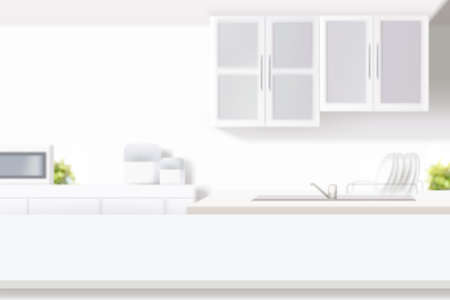Understanding Natural Light in British Homes
The unique character of the UK climate, with its renowned overcast skies and unpredictable bursts of sunlight, plays a crucial role in selecting the ideal paint colours for your home. Whether you live in a Victorian terrace in Manchester or a sun-drenched cottage on the Cornish coast, understanding how natural light interacts with colour is essential. In northern regions, daylight often carries a cool, bluish undertone, which can make greys appear more sombre and whites seem crisper. Conversely, homes in the south are blessed with warmer sunlight that enriches earthy neutrals and soft pastels, allowing colours to feel inviting and luminous. When choosing paint for any room, observe how light shifts throughout the day—from misty mornings to golden afternoons—and consider how these changes might influence your chosen hues. This thoughtful approach ensures your interiors remain vibrant and harmonious, capturing the true essence of British living.
2. Recognising Architectural Heritage
When choosing paint colours for your UK home, it is essential to acknowledge the architectural heritage that defines so many British properties. From the ornate cornices of Victorian terraces to the grand symmetry of Georgian townhouses, these period features deserve thoughtful consideration. Respecting the character of your home not only preserves its historical value but also inspires a harmonious colour palette that enhances its unique charm.
Understanding the key characteristics of each architectural style will help you select shades that complement, rather than clash with, original details. For example, the muted earth tones and rich greens popular in Victorian interiors differ markedly from the soft pastels and off-whites often found in Georgian homes. Let’s take a closer look:
| Period | Key Features | Suggested Colour Palettes |
|---|---|---|
| Victorian | Ornate mouldings, high ceilings, sash windows | Deep reds, forest greens, navy blues, warm neutrals |
| Georgian | Symmetrical facades, large sash windows, detailed cornices | Dove grey, sage green, pale blue, chalky white |
| Edwardian | Larger rooms, stained glass, simple lines | Soft creams, duck egg blue, gentle pinks |
| Modernist/Contemporary | Open-plan spaces, minimal detailing, large panes of glass | Crisp white, charcoal grey, bold accent hues |
Inspiring Your Palette Through Heritage Details
Original fireplaces, decorative ceiling roses or panelled doors can all serve as inspiration for your colour choices. Rather than masking these features with overpowering shades, opt for complementary tones that allow period details to shine. For instance, pairing a soft Georgian blue with crisp white woodwork can highlight elegant window frames and skirting boards.
The Balance of Old and New
If your home blends modern updates with traditional architecture—a common scenario across the UK—consider using a palette that bridges both eras. Neutral backdrops with heritage-inspired accents can create cohesion while still honouring the past.
Local Context Matters
Finally, look beyond your front door: neighbouring houses often share similar periods and styles. Drawing from local exterior palettes ensures your home sits comfortably within its British streetscape while retaining individuality inside.

3. Connecting with Local Landscape and Culture
When selecting the perfect paint colours for your UK home, drawing inspiration from the local landscape and cultural heritage can create a truly authentic and harmonious living space. The British countryside is renowned for its gentle, muted palette—think soft sage greens reminiscent of rolling hills, stony blues echoing the tranquil coastline, and warm earthy tones inspired by heather-clad moors or historic brickwork. These hues not only evoke a sense of place but also help to ground your interiors within their regional context.
For those living in bustling cities or charming villages, consider how urban textures and architectural elements influence your choice. Industrial greys, deep navies, and chalky whites can reflect the character of traditional London terraces or Victorian townhouses, while still allowing for a contemporary twist. Coastal homes might embrace sandy neutrals, seafoam greens, or driftwood-inspired browns to mirror the ever-changing British shoreline.
By referencing local colours and materials, you ensure your home feels connected to its environment—whether that’s the lush greenery of the Lake District, the windswept cliffs of Cornwall, or the classic brick and stone facades found throughout the UK. This thoughtful approach creates a sense of belonging and timeless style that resonates through every room.
4. Selecting Paint Finishes for Function and Feel
When choosing paint colours for your UK home, the finish is just as important as the hue itself. The right finish not only influences the look and atmosphere of your space but also its durability—especially in a climate notorious for its rainy weather. Whether you’re drawn to traditional English charm or prefer a more contemporary touch, understanding the range of paint finishes available will help create an interior that’s both beautiful and practical.
Understanding Popular Paint Finishes
Each room has unique requirements depending on how it’s used and the desired ambience. Below is a handy guide to common paint finishes suitable for UK homes:
| Finish Type | Best For | Main Features |
|---|---|---|
| Matt/Flat | Bedrooms, Living Rooms | Elegant, absorbs light, hides imperfections, creates a cosy feel, less washable |
| Eggshell | Dining Rooms, Home Offices | Slight sheen, subtle sophistication, moderate durability, easy to clean |
| Satin/Silk | Kitchens, Hallways, Children’s Rooms | Smooth finish, reflects more light, highly durable and washable—ideal for high-traffic areas and damp UK weather |
| Gloss/High Gloss | Woodwork, Doors, Skirting Boards | Very shiny, hard-wearing, highlights architectural details—great for traditional mouldings or modern accents |
Considering Functionality in the British Climate
The UK’s unpredictable rain and humidity mean that walls and woodwork can be prone to marks or damp. Opting for finishes like satin or silk in busy or moisture-prone spaces (such as entryways or kitchens) will make cleaning easier and prolong the life of your decor. In period properties with original features, matt or eggshell paints lend an understated elegance while still offering enough resilience for everyday living.
Cultivating Atmosphere Through Finish Choice
If you’re aiming for that quintessentially British snug—a warm retreat against grey skies—matt finishes in rich tones can cocoon a space beautifully. For lighter, airier rooms typical of contemporary UK homes, eggshell or satin provides gentle reflection without sacrificing comfort.
A Blend of Tradition and Modernity
Your choice of paint finish allows you to honour tradition or embrace modern trends. High gloss on trims gives a nod to classic Georgian interiors, while velvety matt walls feel both timeless and quietly luxurious. Ultimately, selecting the right finish will elevate your chosen colours and ensure your home stands up stylishly to British living.
5. Balancing Trend and Timelessness
When selecting paint colours for your UK home, striking the right balance between on-trend shades and enduring classics is key to achieving a space that feels both current and lasting. British interiors are renowned for their subtle elegance—think soft sage greens inspired by rolling countryside, or deep navy blues reminiscent of London’s chic townhouses. While it’s tempting to embrace the latest colour trends, grounding your palette in timeless hues ensures your home won’t feel dated as fashions shift.
Start by identifying which contemporary British design trends resonate with your taste. Currently, earthy neutrals and muted pastels are making waves across the UK, bringing warmth and calmness to homes. Pair these trend-led choices with classic colours such as crisp white, gentle stone grey, or heritage green for a sophisticated look that stands the test of time.
Don’t be afraid to experiment with accent walls or painted woodwork in more daring tones, but use them sparingly against a backdrop of reliable neutrals. This way, you can easily refresh the look with simple updates rather than a full repaint when trends evolve. Remember, the most successful UK interiors merge the best of both worlds: a nod to tradition with just enough modern flair to keep things fresh and inviting.
6. Practical Tips for Testing and Sampling
Before committing to a paint colour, it’s essential to test your choices in situ. In the UK, natural daylight can change dramatically with the seasons and even throughout the day. To get an accurate sense of how a hue will look in your home, paint generous swatches directly onto your walls—ideally in more than one spot, such as near windows and in shadowy corners. Observe these samples at different times: a shade that feels inviting on a sunny afternoon may appear much cooler or moodier during a typical overcast British morning.
Take advantage of tester pots widely available from both high street shops and local independent retailers. Many UK stores are happy to advise on best-selling shades for period properties or contemporary flats, and some heritage brands—like Farrow & Ball or Little Greene—offer curated palettes inspired by British history and architecture. Don’t be afraid to ask staff for recommendations tailored to your postcode or property age; their expertise can prove invaluable when searching for colours that complement traditional features like mouldings or fireplaces.
When sampling, use white card or lining paper if you’re reluctant to paint directly onto plaster. Move these painted sheets around the room to gauge their effect in every nook. Remember, British weather means you’ll likely spend a fair amount of time indoors, so ensure your chosen colour feels welcoming all year round. Take your time before making a final decision—the right shade is worth waiting for, transforming your home into a beautifully personal sanctuary.

